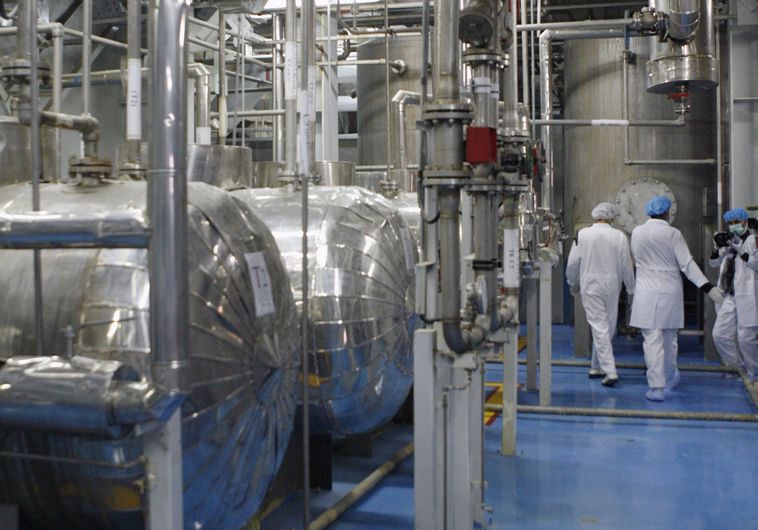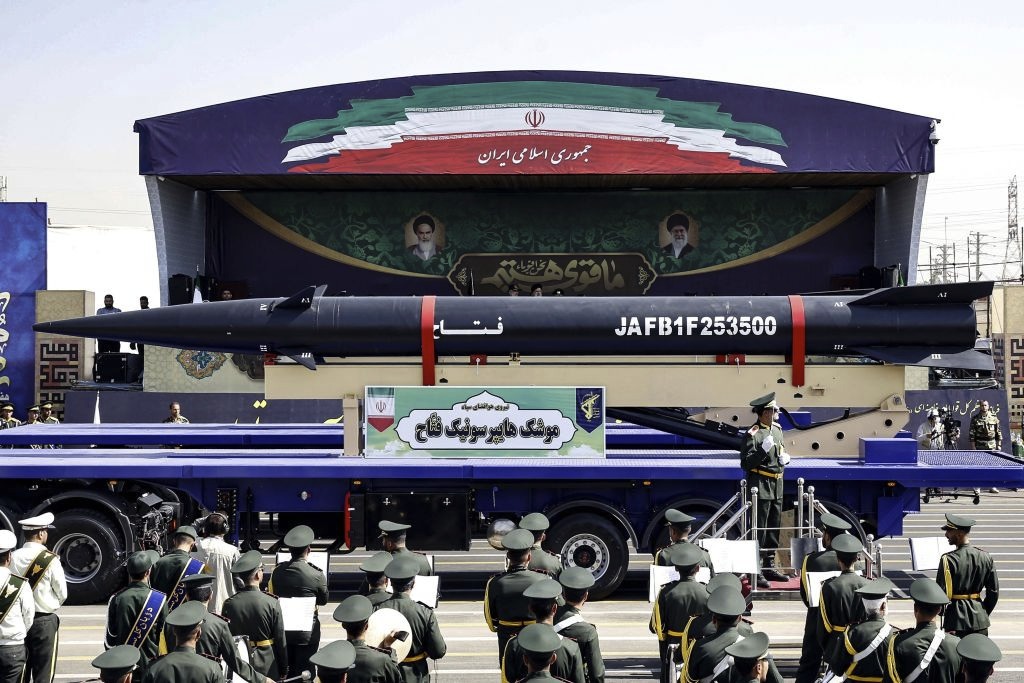How Iran’s Economic Gain from a Nuclear Deal Might Affect Its Foreign Policy
Patrick Clawson/Washington Institute/July 11, 2015
The additional resources unleashed by the agreement will put Iran in a better position to spend more on its various priorities, but how much it puts toward foreign adventurism will remain a political, not an economic, decision. The economic windfall Iran will gain from a nuclear agreement will create opportunities for Tehran. Yet understanding the impact this influx will have on its foreign policy requires some context about the Iranian economy and the regime’s activities abroad.
IRAN’S NEEDS ARE NOT DIRE
Like other countries, Iran has pressing domestic needs on which it should spend money, yet its situation under sanctions is hardly as bad as one might expect — in fact, it is comparable to that of Western governments in many respects. Consider first infrastructure. In 2013, the American Society of Civil Engineers estimated that the United States had $3.6 trillion in unmet infrastructure needs, equal to 25% of its GDP. Indeed, a good argument can be made that U.S. infrastructure is in worse shape than Iran’s. The Islamic Republic is certainly adding infrastructure at a faster pace — it is building more subways and high-speed roads than the United States, in a much smaller territory. And according to the most recent five-year period of data from the U.S. Energy Information Administration, Iran has expanded its electricity generating capacity at more than seven times the rate of the United States.
Second, Iran needs more affordable housing and job creation, but so does the United States. In fact, Iran’s gaps in these sectors may not be as great as America’s when measured as a share of GDP. Iran is coming off a period of massive investments in social housing — though admittedly, much of it has been poorly planned and badly built. And with its working-age population shrinking, Iran’s need for investments to create jobs is not what it was ten years ago, when its post-revolution baby boomers were expanding said population by 3% each year.
Third, Iran needs tens of billions of dollars to shore up pension funds for its rapidly aging population. Again, hardly unique — U.S. public pension funds are at least $3 trillion short of being fully funded, and debate continues about what is needed to ensure that Social Security and Medicare benefits continue at the same level. The Social Security system’s trustees estimate the “unfunded obligation through the infinite horizon” for the two programs at $46 trillion, though most of that is for the far, far future.
Fourth, Iranian economic growth has not been good recently, but the same can be said for the global economy. Advanced industrial countries were hit hard by the 2008 financial crisis, oil exporters were clobbered by the oil price collapse, and emerging market economies have been hit by a series of problems. To be sure, Iran went through a steep recession in 2012-2013, and two years of anemic growth have not brought its GDP back to pre-recession levels. Yet as bad as these results sound, they followed several years of solid growth. Iran’s economic growth over the past eight years is as good as America’s: according to the World Bank, both countries’ GDPs are 12% higher in 2015 than they were in 2007.
Moreover, Iran achieved this growth without running up a huge public debt. Recently, Finance Minister Ali Tayyebnia bemoaned the cooked books he inherited from former president Mahmoud Ahmadinejad, complaining that government debt is actually 25% of GDP rather than the lower figure previously reported. Yet the International Monetary Fund pegs the U.S. public-debt-to-GDP ratio (including state and local debt) at 107%, up more than 40 percentage points since 2007.
Over the same period, most European nations have done even worse than the United States and much worse than Iran, with lower growth and higher debt increases. At a time when EU member Greece is facing economic collapse, Iranians have good reason to believe that their economy is in better shape than Europe’s. In sum, Iran is arguably doing about as well as the United States at meeting its domestic needs even while under sanctions — though matching America’s poor performance of late is no great accomplishment. Economists may say that it is more appropriate to compare Iran to other oil exporters, but Iranians rarely think of themselves in the same category as Saudi Arabia or Kuwait; their points of comparison are the advanced Western countries. Besides which, the oil exporters are not doing so well these days now that per-barrel prices have stayed down; many are sustaining economic growth only by running massive budget deficits.
Of course Iran’s leaders still want to see the economy improve. That has been perhaps their main motivation for compromise in the nuclear talks — the pain that the West is inflicting on Iran’s economy has been central to persuading Tehran to negotiate seriously. At the same time, however, Iran has muddled through the shock of the sanctions imposed in 2012, and its structural problems are not particularly severe compared to those of other countries, including the United States. Most significant, Supreme Leader Ali Khamenei does not believe that sanctions relief is particularly important politically or even economically. Part of this thinking rests on his ideological conviction that resistance to Western “arrogance” matters more than prosperity, but another part is based on his largely correct view that Iran’s path to prosperity lies in diversifying away from dependence on oil.
IRAN’S INEXPENSIVE WAY OF WAR
Tehran’s most troubling activities do not cost much, at least in budgetary terms. Although its exact expenditures on terrorism and cyberwarfare are unknown, few estimates suggest that either runs more than a billion dollars annually. As for the nuclear program, the official budget of the Atomic Energy Organization of Iran has been around $300 million per year, and the program’s direct financial cost is likely no more than $1-2 billion per year. Regarding Iranian support for sectarian militias in Iraq and Syria, even the highest estimates — $300 monthly salaries for 140,000 militia members plus another $900 per month each for arms and sustenance — amount to only $2 billion annually. Propping up Syria’s Assad regime may require a few billion dollars a year, but much of Iran’s funding to date has been in the form of oil it could not otherwise easily sell (because of sanctions and poor market conditions), not cash. Tehran’s numerous other operations in Iraq and Syria — from bribery to humanitarian aid — may cost another $1-2 billion. At most, then, the combined price tag for all of these problematic activities is around $10 billion a year. Yet even this maximal figure represents less than 3% of a GDP that falls in the range of $400 billion to $1 trillion, depending on how one translates Iran’s distorted currency into U.S. dollars.
HOW IRAN WOULD USE A WINDFALL
To understand how much of Iran’s windfall from the nuclear deal might go toward meeting its pressing domestic needs, it is useful to look at what the United States has done with its much larger windfall from the boom in oil and gas production over the past few years. Rather than finding ways to tap this money to address economic inequality and crumbling infrastructure, Americans have used most of it along the same lines as previous spending — meaning very little went for social needs or government investment.
If Iran follows the same status-quo path, the vast majority of its windfall would be used for domestic purposes, but some proportion could also be spent on foreign adventurism. Over the past few years, Iran’s decisionmakers have put billions of dollars into their drive for regional influence despite being tightly constrained by sanctions, showing the high priority they have placed on that goal. Perhaps their priorities will change once a nuclear deal is reached, but that assumption is more than a little optimistic.
FOREIGN POLICY ONLY LOOSELY CONNECTED TO ECONOMICS
Iran is a substantial economic power that has developed inexpensive ways to challenge the U.S.-aligned camp, from soft-power broadcasting and bribes to low-cost tools of war such as terrorism and extremist militias. Therefore, the constraints on its foreign policy have not been, and are unlikely to be, primarily economic. Tehran’s calculations about whether to be even more assertive abroad are less likely to be influenced by economic calculations than by the prospects it sees for political success of one form or another, e.g., increased influence in the countries where it intervenes or domestic reinforcement of the leadership’s position. The additional resources unleashed by a nuclear deal will put Iran in a better position to spend more on foreign adventurism, but the basic factors determining the scope and nature of such expenditures will remain political, not economic.
**Patrick Clawson is director of research at The Washington Institute.






















